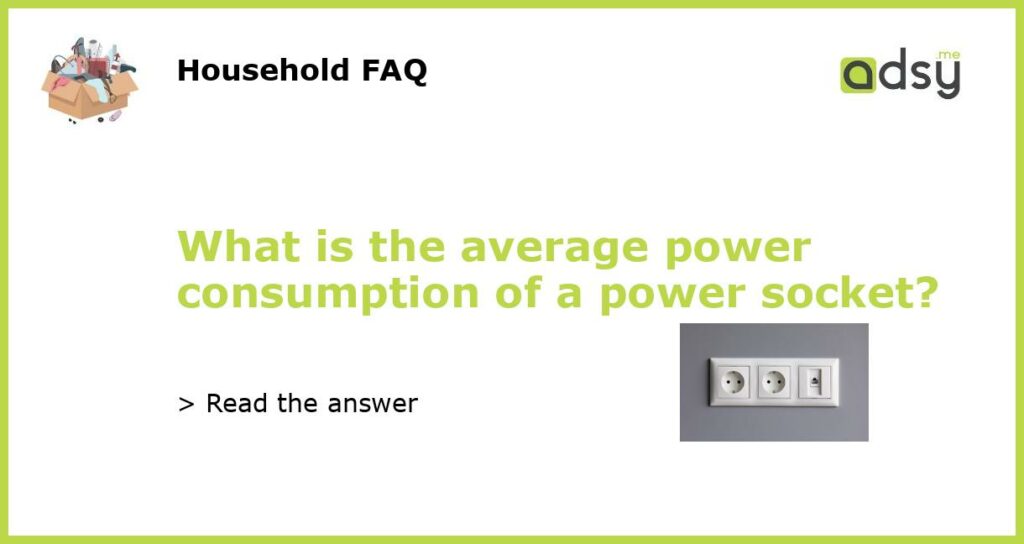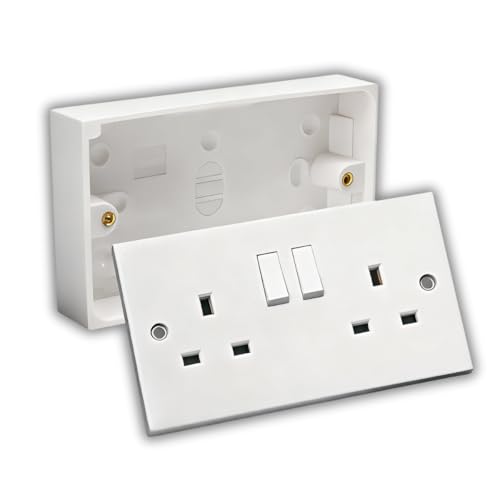Understanding the Average Power Consumption of a Power Socket
Power sockets play a critical role in our daily lives, allowing us to connect and power essential appliances. As we become more conscious of energy consumption and its impact on the environment, it is important to understand the average power consumption of a power socket. In this article, we will explore this topic and shed light on the factors that influence power consumption.
Factors Affecting Power Consumption
The average power consumption of a power socket is influenced by various factors. These factors include:
- Type of Appliance: Different appliances have varying power requirements. High-power devices like heaters and air conditioners consume more energy compared to low-power devices like smartphones and lamps.
- Usage Duration: The length of time an appliance is connected to a power socket directly affects its energy consumption. An appliance used for several hours will consume more energy than one used for a few minutes.
- Power Rating of the Appliance: Each appliance has a power rating, which indicates the amount of power it consumes. This rating is typically measured in watts or kilowatts.
- Standby Power Consumption: Many appliances consume power even when they are not in use. This is known as standby power consumption and can contribute to the overall power consumption of a socket.
Measuring Power Consumption
To determine the average power consumption of a power socket, you can use a power meter or energy monitor. These devices provide real-time information about power usage, allowing you to measure the exact amount of energy being consumed by your appliances. By connecting the power meter between the socket and the appliance, you can get accurate readings of power consumption.
Calculating Power Consumption
If you don’t have a power meter, you can estimate power consumption using the following formula:
Power Consumption (in watts) = Voltage (in volts) x Current (in amps)
For example, if the voltage is 220 volts and the current is 5 amps, the power consumption would be 220 x 5 = 1100 watts.
To convert watts to kilowatts, divide the power consumption by 1000. In the example above, the power consumption would be 1100 ÷ 1000 = 1.1 kilowatts.
Energy Efficiency and Power Consumption
Reducing power consumption is not only beneficial for the environment, but it can also save you money. Opting for energy-efficient appliances can significantly reduce the average power consumption of your power sockets. Look for appliances with a high energy efficiency rating, such as those labeled with the Energy Star logo.
Additionally, adopting energy-saving habits and practices can help lower your power consumption. Turning off appliances when not in use, using power strips to easily switch off multiple devices at once, and optimizing the use of natural light are all simple steps you can take to reduce energy consumption.
In conclusion, the average power consumption of a power socket is influenced by factors such as the type of appliance, usage duration, power rating, and standby power consumption. Measuring and calculating power consumption can provide valuable insights into your energy usage. By opting for energy-efficient appliances and adopting smart energy-saving habits, you can minimize the environmental impact and save money on your electricity bills.






